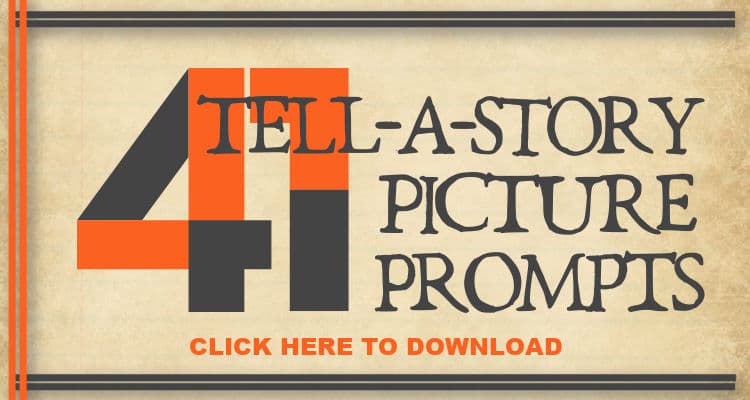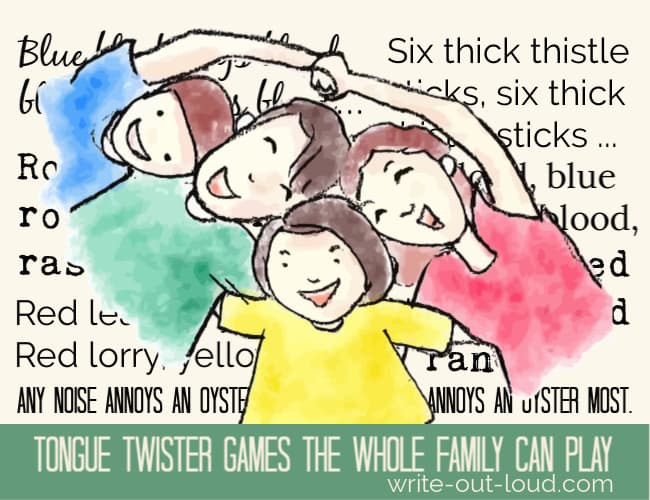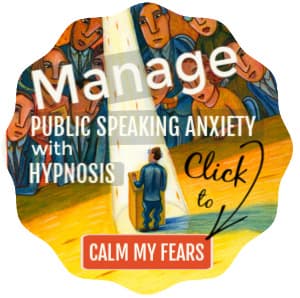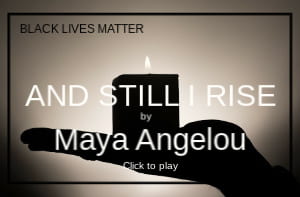- HOME ›
- Activities and games ›
- Tell-this-story picture prompts
Tell-this-story picture prompts
41 quality image prompts for impromptu speaking activities
By: Susan Dugdale
We know being asked to make an impromptu speech can be nerve wracking. We also know the ability to speak fluently and meaningfully at a moment's notice is highly valued in social as well as workplace or business settings.
Activities using tell-this-story picture prompts are an excellent low-stress, and fun, way to get people (students and adults) used to speaking off-the-cuff freely and effectively.
What's on this page
- 41 tell-this-story picture prompts - a printable pdf to download
- 15 story starters or openers - a printable pdf
- 15 examples of story openings using the starters
- 24 story additions (words and phrases) - a printable pdf
- Two tell-a-story impromptu speaking activities using the picture prompts and story starters, with extensions
- Expert interviews using the picture prompts
- Story circles - the basic version with 3 variations, which includes one that uses the words and phrases from the story additions file.
- The benefits of using tell-a-story picture prompts
- More impromptu public speaking activities for groups
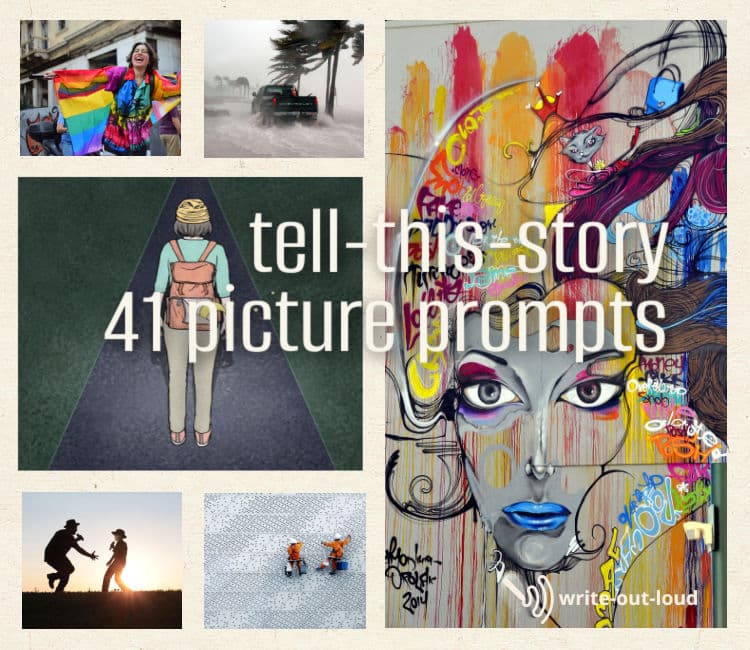
Download 41 tell-a-story picture prompts
Either click this link: tell a story picture prompts, or the image above, to access 41 images to use in the impromptu storytelling activities below.
Download the story starters
Click on either the image above or on this link: download 15 starters for stories to access the printable pdf of story openers. (Please note the pdf will open in a new window.)
You'll need these, along with the images, for the activities below.
If you've never used openers in an impromptu speaking activity before, my examples will give you the gist of it.
Openers or starters for stories - 15 examples
Having a ready-made opening sentence to begin a story is a great way to gently ease people who haven't done a lot of impromptu storytelling into the process. It takes the pressure off them feeling they have to come up with something immediately.
To illustrate, I've used each of the 15 starters from the printable file as the opening for a story based on one picture: this pickup truck being driven through a storm.

- One fine day...
...the rain fell from the sky in torrents, and the wind blew the trees so hard their branches were horizontal. It was the kind of day that sensible people stayed inside. However, Darrin was not sensible. (To be continued.) - It was on a Tuesday, (or Wednesday...snowy, winter, sunny spring...), morning/afternoon/evening...
It was on a Tuesday morning, a school morning, a morning when Jack's father, and the owner of the smart black Chev pick-up truck, you can see in the picture, (his pride and joy), was scheduled for the pick-up run. (To be continued.)
- Once upon a time, and a long time ago it was too, there was...
...a storm of savage ferocity. The wind howled through palm trees and the rain was torrential. Dwayne could scarcely see where he was going. (To be continued.) - If I knew then what I know now this story would never have happened.
When it began the day was fresh and young. Perfect in every way. The sky was eggshell blue. The sun shone making the polished paintwork on Stacey's pickup glow. (To be continued.) - It was the best of times. It was the worst of times. (This is the wonderfully dramatic opening line of Charles Dicken's novel The Tale of Two Cities.)
It was the best of times. It was the worst of times. I have always loved adventuring with my Grandpa. It was fun, and unpredictable. Exciting. Everything a boy of eleven wanted. The best. Together we were invincible, I thought. We could take on the world and win. We were the A-team. (To be continued.) - How did I get here? I mean, what is going on?
How come I am in the cab of a black pickup being driven through a raging storm? I don't know the driver. Who is he?
Trent was puzzled. The last thing he remembered was being in a club and talking to a guy at the bar.
- Things never, ever, are what they seem. You think you're looking at {Insert whatever it is.) but you are not.
You think you are looking at a black Chevrolet being driven through a tropical storm, don't you? You can see the water flooding across the road, and the palm trees bending in the wind. It looks so real.
But it's not. This is not a photo. Welcome to the world of artificial intelligence and images mimicking reality. (To be continued.)
- This is a secret I've never shared before. Come closer. It all began...
...with assuming I knew someone really well. Afterall this was a friend I've known since I was four and we were in the same kindergarten class. We bonded over toy trucks in the sand pit, and there's been shared good, not-so- good, and in-between times ever since. I thought we were close.
And then, one day, he turned up driving this Chevvy. Where did it come from? How had he got it? (To be continued.) - When I entered the scene of the crime, this is what I found...
...the Chevrolet, the one in the picture, had been damaged. The driver's door was buckled and unopenable. The front right light was smashed and there were multiple deep scratches running the entire length of the vehicle. I was told it had been abandoned, with its motor still running. (To be continued.) - Facts are facts for a very good reason. That is because they are true. You cannot argue with them which is why I know there is only one true side to this tale, mine.
It began with a bet between two friends: Fred and me. I didn't want to accept the bet. The Chevrolet, I argued, was too valuable to gamble with. Fred, I said, you need it. You cannot afford to lose it. I won't, he said. And he insisted that we go ahead. To my deep regret, we did. (To be continued.)
- It all began quite innocently. A {insert whatever is in the picture} is not in itself alarming. However, things changed when...
...the wind became stronger, and bits of flying palm tree fronds wound themselves around the window wipers. The combination of fronds and torrential rain made the wipers struggle. They groaned with the effort to move and finally gave up. Quite suddenly, I was unable to see a thing. I was driving blind. (To be continued.) - {Insert the name of your principal character e.g. Alice} sighed. It was altogether too much. How many times would she/he/they have to repeat herself?
Harvey did not have a driving license. This was a fact that did not deter him from begging to be allowed to take the pickup out. No, said Alice. It was 'no' yesterday. It was 'no' last week, and it will be 'no' the next week too, until you get a license. (To be continued.) - You know I have always adored... {Insert whatever you want from your image. Eg. black painted vehicles} Let me tell you why.
They have a certain gravitas, a dignity, that vehicles painted other colors will never have. A yellow, pink, blue, or grey truck can't cut it in the same way. There's no automatic innate authority accorded them. (To be continued.) - I knew the moment I saw him...
...driving the truck that something was dreadfully wrong. Maurice would never ever take it out in a storm otherwise. He was paranoid about two things that should have made it impossible. The first was getting his precious truck dirty. The second was his deep-seated fear of getting trapped in flood waters. - She found it impossible to tell lies.
Mostly. 99% of the time. However, today was an exception. Today to lie was the only right and proper thing to do. Shannon took a deep breath, and looked Tony straight in the eyes, hoping he wouldn't notice her hands shaking.
The benefits storytelling with picture prompts
Working with picture prompts helps develop:
- observational skills through becoming aware of detail (in the picture) and how it can be interpreted.
- empathy - the ability to 'see, think and feel' from another's point of view.
Working with storytelling helps develop an increasing awareness and use of all aspects of vocal variety, (pace, pause, pitch, volume, fluency) and body language in order to tell a story effectively.
The combined impact makes this a valuable way of gaining impromptu speaking skills.
Activities using the story openers with the images
1. All stories begin with the same starter
Regardless of the picture used every story begins with the same opener.
Split your class into pairs. Give each pair two different pictures folded in half, so the picture is not seen.
Nominate the person to begin. They pick a picture and open it. Then using the chosen starter they tell a 1 - 2 minute story about it.
When it's finished, the roles are reversed. The listener picks up the second picture and tells their story using the same opening.
2. The picture is same but the openers change
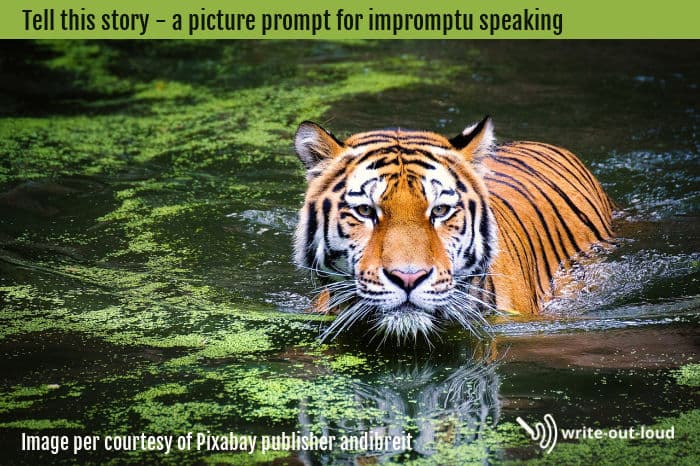
Divide your class/group into pairs.
Give each pair a copy of the same picture, for instance the one above, and two of the story openers.
Nominate which of the pair is to tell a story first. The person listening gives the storyteller the opening they are to use to tell a 1 - 2 minute story.
When the story is finished, it's the person who was listening turn to tell a story and they are given their opening by the person who went first.
3. Reshuffle, repeat and feedback
To extend and reinforce what is being learned run another session using either the first or second activity, reshuffling the pairs so everyone has a new partner.
When it's finished pull everyone back into a circle and do a feedback round.
The sorts of questions to ask are:
Who heard a great story? What was good about it? Why did whatever is remarked on, (the voices used, the body language, the unexpected ending, the character development...), make it good? Where could the story have been strengthened? How would you do that?
Ask the students whose stories were singled out to repeat them for the whole group.
I've always found taking time to give and receive feedback immensely valuable for both my students and myself.
More story telling activities using picture prompts
1. Expert Interviews
Divide your group into pairs.
Give each pair two images.
Let them decide who will be the interviewer and who will be the expert. The expert chooses which of the two pictures they will use.
The interviewer questions the expert to find out as much as they can about their specialty area.

For example, based on the image above the questions might be:
- how they became interested in mountain climbing,
- what training they undertook to become an expert climber,
- whereabouts they climb,
- what dangers are involved,
- what they've learned about themselves and other people through pursuing climbing and teaching others,
- why they continue to climb,
- what recommendations do they have for others who want to do the same...
The goal is approximately 2 - 3 minutes of sustained question and answer.
Then the roles are reversed. The expert becomes the interviewer, and interviewer is now an expert in whatever subject is suggested to them in the second image.
(This is a variation of the original expert interview game I played with students. That one didn't use images.)
2. Story Circles
There are numerous variations on story circles. Here are four using images as prompts to get a story started. Use the basic version first and then add the second, third and/or fourth when your class is familiar with the activity.

The basic story circle activity
Divide your class into groups of 5-8 students, and seat them in a circle.
Give them one picture per group (like the one above) and a starter.
The starter could be one of the 15 from the pdf file or another you think fits the image and will readily get their ideas flowing. For example, both of these are apt.
- "The problem," said Stanley to Sarah, as he leaned against the rail staring out to sea, "is that I'm not ready retire."
- "We have to stop meeting like this."
Put the image in the center of the circle where everyone can see it. Read out the starter. Then go around the circle with each person adding a word at a time.
The goal is to build a complete short story, with a beginning, middle and end, in approximately 10 rounds.
For example, the story may begin like this.
"The problem," said Stanley to Sarah, as he leaned against the rail staring out to sea, "is that I'm not ready retire."
- First person: I
- Second person: still
- Third person: feel
- Fourth Person: young.
- Fifth person: I
- Sixth person: don't
- Seventh person: care
- Eighth person: what
- First person: they
- Second person: say.
- Third person: ...
When story circles flow there's very little hesitation between contributions. People go with what first pops into their minds rather than waiting for a better idea. Encourage that, while acknowledging that some stories will be more effective than others. Practice will make the process easier and the stories better.
Three story circle variations
- Add two, three or four words per person.
- Add direction changing capabilities using hand signals: back, forward and across the circle.

When it's their turn players can point to reverse the flow of the story back to the player previous to them, pass (forward) it on to the player alongside them waiting for their turn or bounce it across the circle to a player opposite.
If they choose to bounce it, they need to say the name of the person they intend the story to go to avoid confusion.
3. Add a word or phrase that must be used.
Download and print the pdf of words and phrases. Cut them out so you have 24 slips of paper each with a word or phrase on them.
Get a story circle started. Let it go through a couple of rounds and then randomly hand out one or two per round. The players must fit whatever word or phrase is on the piece of paper they get into the story. For example: "Fortunately..." or "How dare you!".
More public speaking activities for groups
If you found these activities interesting and fun for your classes, you're likely to find this page useful too.
It's a directory or gateway page to the 40+ public speaking activities and games on my site, many of which come with printable resources, like these tongue twister games.
I put this collection together over the Covid lockdown period when many parents and caregivers suddenly found themselves having to teach at home. These are games the whole family can enjoy.
PS. The benefits of impromptu public speaking
Impromptu public speaking exercises like these build leadership and communication skills and confidence while having fun.
They help people to:
- develop the ability to pull ideas together quickly - 'to think on their feet'.
- express their thoughts and feelings.
- form a direct relationship with their audience, one that is conversational and not reliant on notes or a script. That gives them greater flexibility and freedom.
